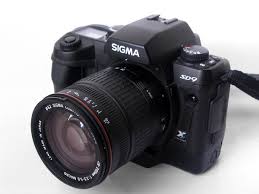Introduction to the camera brands Industry in 2024
Overview of the Current Camera Market
The year 2024 marks a pivotal moment in the evolution of the camera brands industry, with technological advancements, shifting consumer preferences, and emerging trends reshaping the landscape. As we delve into the realm of camera brands in 2024, it becomes evident that established players are facing new challenges from innovative newcomers, while the convergence of cutting-edge technologies like artificial intelligence and augmented reality is redefining the capabilities of modern camera brands. This article explores the latest trends and developments in the camera market, offering insights into the strategies adopted by both legacy brands and emerging players to stay ahead in this dynamic industry.
Cameras Brands List :
Canon Camera

Nikon Camera

Sony Camera

ujifilm Camera

Panasonic Camera

Olympus Camera

Leica Camera

Pentax Camera

icoh Camera

Sigma Camera

Hasselblad Camera

GoPro Camera .Kodak Camera .Polaroid Camera . arri Camera .RED Digital Cinema Camera .Panavision Camera .Blackmagic Design Camera .Phase One Camera.
Introduction to the camera brands Industry in 2024
In 2024, the camera brands industry continues to evolve at a rapid pace, driven by technological advancements and changing consumer preferences. From compact point-and-shoots to sophisticated mirrorless cameras, the market offers a diverse range of options for both professionals and hobbyists alike.
Overview of the Current Camera Market
The current camera brands market is a dynamic landscape with established brands facing increasing competition from emerging players. Consumers today demand not just high-quality images but also innovative features such as connectivity options, enhanced low-light performance, and advanced autofocus capabilities.
Factors Influencing the Camera Industry in 2024
Several factors are shaping the camera industry in 2024, including the rise of smartphone photography, the growing demand for content creation tools, and the impact of artificial intelligence on image processing. Sustainability and eco-consciousness are also driving brands to develop more environmentally friendly practices.
Established Camera Brands: Continuity and Innovation
Established camera brands are navigating the evolving landscape by blending continuity with innovation. Legacy companies are leveraging their history and expertise to pioneer new technologies while adapting to meet the changing needs of consumers.
Legacy Brands Pioneering New Technologies
Legacy brands such as Nikon, Canon, and Sony are at the forefront of introducing cutting-edge technologies like stacked CMOS sensors, AI-driven autofocus systems, and computational photography techniques. These innovations are pushing the boundaries of what is possible in camera technology.
Strategies for Market Dominance among Established Brands
To maintain market dominance, established camera brands are focusing on diversifying their product offerings, expanding into new market segments, and enhancing their customer service and support. By listening to consumer feedback and staying ahead of trends, these brands are staying relevant in a rapidly changing industry.
Emerging Players in the Camera Market
While established brands continue to lead the market, emerging players are making their mark with disruptive innovations and fresh perspectives. These up-and-coming camera brands are challenging the status quo and pushing the boundaries of what is traditionally expected from a camera.
Up-and-Coming Camera Brands to Watch
Brands like Fujifilm, Panasonic, and DJI are gaining traction in the market with their unique approach to camera design and functionality. With a focus on user experience, intuitive interfaces, and compact form factors, these brands are capturing the attention of photography enthusiasts worldwide.
Disruptive Innovations from New Entrants
New entrants to the camera market are introducing disruptive innovations such as modular camera systems, artificial intelligence-driven image editing tools, and hybrid camera-drone combos. By thinking outside the box and challenging conventional wisdom, these companies are reshaping the future of photography.
Technological Advancements Shaping the Future of Cameras
The future of cameras is being shaped by rapid technological advancements that are revolutionizing how we capture and interact with images. From sensor technology to augmented reality, cameras are evolving to offer new capabilities and immersive experiences to users.
Advances in Sensor Technology and Image Processing
Sensor technology is advancing rapidly, with innovations like backside-illuminated sensors, global shutters, and high-resolution imaging capabilities becoming more accessible in modern cameras. Coupled with powerful image processing algorithms, these advancements are enhancing image quality and low-light performance.
Integration of Augmented Reality and Virtual Reality in Cameras
Cameras are increasingly incorporating augmented reality (AR) and virtual reality (VR) features to provide users with immersive shooting experiences and creative opportunities. From AR overlays to VR content creation tools, cameras are blurring the lines between the physical and digital worlds, opening up new possibilities for storytelling and expression.
Sustainability and Ethical Practices in Camera Manufacturing
In a world increasingly focused on sustainability, camera brands are making strides towards eco-friendly manufacturing. Efforts include reducing carbon footprints, using recycled materials, and implementing energy-efficient practices. These initiatives not only benefit the environment but also contribute to a positive brand image.
Efforts Towards Eco-Friendly Camera Production
Many camera brands are investing in eco-friendly production methods. From using renewable energy sources in manufacturing facilities to creating cameras with recyclable materials, the industry is striving to reduce its environmental impact. This shift towards sustainability reflects a growing awareness of the importance of protecting our planet.
Ethical Sourcing and Labor Practices in the Camera Industry
Ensuring ethical sourcing of materials and promoting fair labor practices throughout the supply chain is gaining prominence in the camera industry. Brands are taking steps to trace the origins of components, support fair wages for workers, and uphold human rights standards. By prioritizing ethics, camera manufacturers are building trust with consumers who value socially responsible products.
Consumer Preferences and Trends in Camera Design
Camera design is evolving to meet changing consumer preferences. Customization and personalization options are becoming more popular, allowing users to tailor their cameras to their unique preferences. Additionally, design aesthetics and form factors are shifting to cater to modern lifestyles and aesthetic sensibilities.
Customization and Personalization in Camera Products
Consumers are seeking cameras that reflect their individuality. Brands are offering customization options such as interchangeable lens rings, customizable grips, and personalized engraving services. By providing ways for users to make their cameras uniquely their own, brands are enhancing customer satisfaction and loyalty.
Shifts in Design Aesthetics and Form Factors
Design aesthetics in cameras are moving towards sleek, minimalist styles that blend seamlessly with modern trends. Compact form factors, retro-inspired designs, and innovative ergonomics are gaining popularity among consumers. Brands are adapting to these preferences by creating cameras that are not only functional but also visually appealing.
Impact of Artificial Intelligence on Camera Development
Artificial intelligence (AI) is revolutionizing camera technology, enhancing user experience in unprecedented ways. AI-assisted features such as automatic scene recognition, facial recognition, and image enhancement are becoming standard in many cameras. However, the integration of AI also brings ethical considerations and challenges that the industry must address.
AI-Assisted Features Enhancing User Experience
AI-powered features are transforming the way users interact with cameras. From intelligent autofocus systems to real-time image processing, AI is making photography more accessible and intuitive. These advanced capabilities are empowering photographers of all skill levels to capture stunning images with ease and precision.
Challenges and Ethical Considerations in AI-Driven Cameras
As cameras become more reliant on AI, concerns around data privacy, algorithm bias, and job displacement are emerging. Ensuring transparency in AI algorithms, protecting user data, and addressing any biases in image recognition systems are critical for the ethical development of AI-driven cameras. Balancing technological advancements with ethical considerations is essential for the sustainable growth of the camera industry.
Predictions for the Future of Camera Brands
The camera industry is poised for continued evolution, with shifting market dynamics and emerging opportunities shaping the landscape for brands. Forecasting trends in consumer behavior, technological advancements, and competitive challenges will be key for camera manufacturers looking to stay ahead in a rapidly changing market.
Forecasting Market Dynamics and Competitive Landscape
Anticipating changes in consumer preferences, market demands, and competitor strategies will be crucial for camera brands to stay relevant. Understanding emerging trends, such as the rise of mirrorless cameras or the growing demand for vlogging equipment, will inform strategic decisions and product development efforts. By staying agile and responsive to market dynamics, brands can position themselves for success in a competitive industry.
Emerging Opportunities and Threats for Camera Manufacturers
Identifying and capitalizing on emerging opportunities, such as expanding into new market segments or partnering with tech companies for innovative collaborations, will be key for camera manufacturers seeking growth. At the same time, addressing potential threats, such as global supply chain disruptions or increased competition from smartphone cameras, will require proactive planning and risk mitigation strategies. By staying proactive and adaptable, camera brands can navigate the uncertainties of the future with confidence .
As we conclude our exploration of the camera industry in 2024, it is clear that the future holds both excitement and challenges for camera brands. With a focus on innovation, sustainability, and meeting evolving consumer demands, camera manufacturers are poised to continue pushing the boundaries of imaging technology.
By staying attuned to market trends, embracing technological advancements, and maintaining a commitment to quality and ethics, camera brands can navigate the ever-changing landscape of the industry and thrive in the years to come.
FAQs
1. What are some key technological advancements driving the camera industry in 2024?
2. How are camera brands addressing sustainability and ethical practices in manufacturing?
3. Which emerging players in the camera market show the most promise for growth and innovation?
4. What role does artificial intelligence play in shaping the development of cameras in 2024?
Camera Future List : https://www.kfconcept.com/blog/top-camera-brands.html
